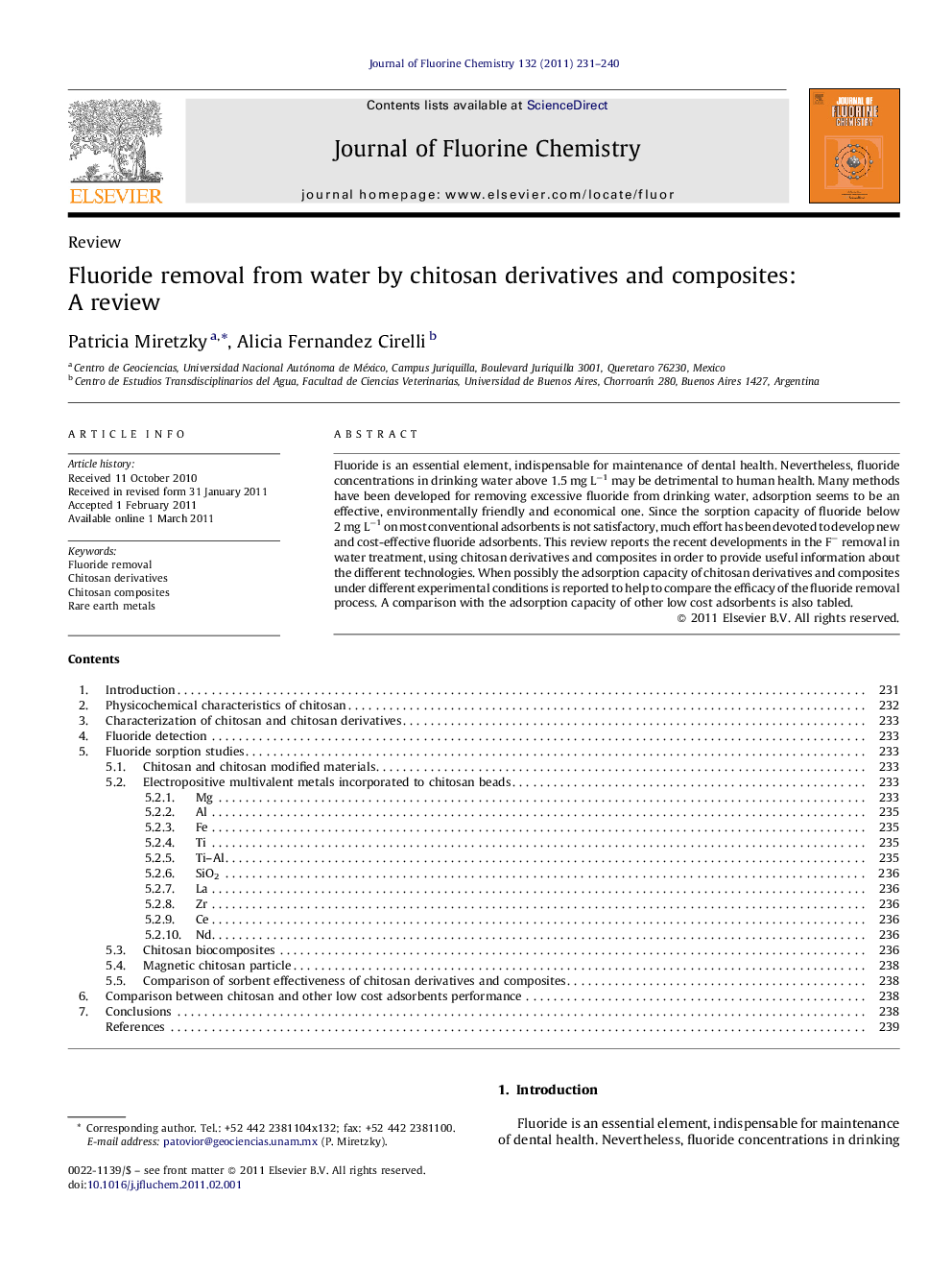| Article ID | Journal | Published Year | Pages | File Type |
|---|---|---|---|---|
| 1314760 | Journal of Fluorine Chemistry | 2011 | 10 Pages |
Fluoride is an essential element, indispensable for maintenance of dental health. Nevertheless, fluoride concentrations in drinking water above 1.5 mg L−1 may be detrimental to human health. Many methods have been developed for removing excessive fluoride from drinking water, adsorption seems to be an effective, environmentally friendly and economical one. Since the sorption capacity of fluoride below 2 mg L−1 on most conventional adsorbents is not satisfactory, much effort has been devoted to develop new and cost-effective fluoride adsorbents. This review reports the recent developments in the F− removal in water treatment, using chitosan derivatives and composites in order to provide useful information about the different technologies. When possibly the adsorption capacity of chitosan derivatives and composites under different experimental conditions is reported to help to compare the efficacy of the fluoride removal process. A comparison with the adsorption capacity of other low cost adsorbents is also tabled.
Graphical abstractSome of the adsorbents reported in this paper presented high adsorption capacity at high F− equilibrium concentration in water, but, in water treatment, the final concentration of F− in the water solution must be below 1.0 mg L−1. So it is desirable that the adsorbent presents high adsorption capacity at low fluoride equilibrium concentrations. The pictogram shows that the best F− adsorbents were Nd–chitosan and MgO–chitosan followed by rare earth metal–chitosan derivatives because they presented higher adsorption capacity at the equilibrium F− concentration of 1 mg L−1.Figure optionsDownload full-size imageDownload as PowerPoint slideResearch highlights► Water defluoridation by chitosan derivatives and composites is reviewed. ► Their adsorption capacity is reported. ► A comparison with the adsorption capacity of other low cost adsorbents is also tabled.
